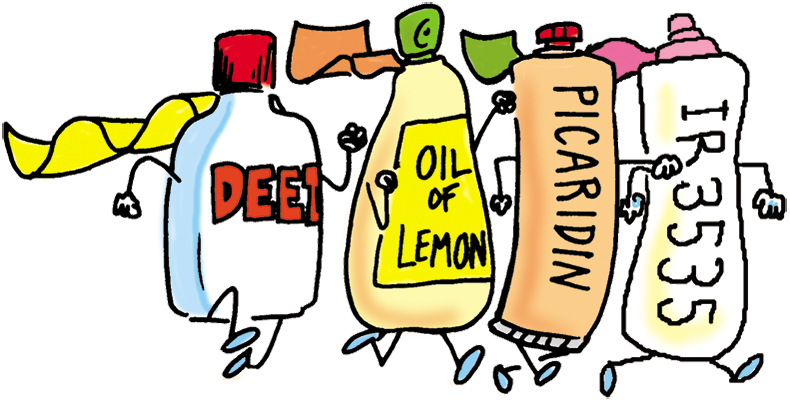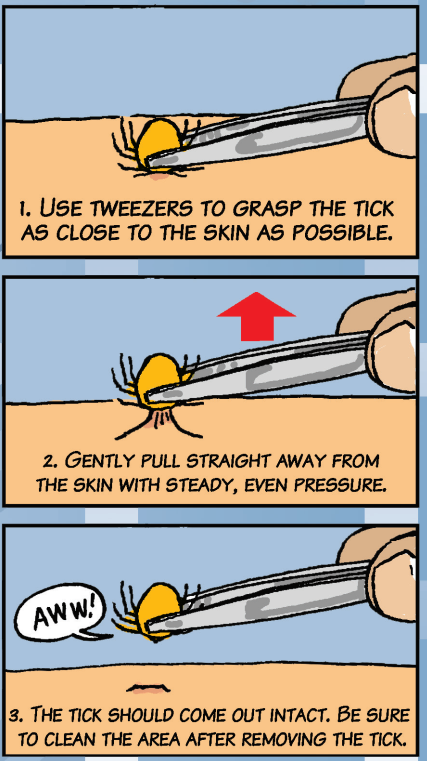Ticks are present throughout Fairfax County and are often found in wooded areas, brushy fields, along trails and around homes. Ticks can spread diseases like Lyme disease, Rocky Mountain spotted fever and ehrlichiosis. Preventing tick bites, controlling ticks around your yard and prompt removal of ticks are important ways to help prevent tick bites and the diseases that ticks may transmit.
Prevent Tick Bites
Avoiding tick bites is the best way to prevent tick-borne diseases like Lyme disease. It is important to be extra vigilant from March through October when ticks are most active and people spend more time outdoors. Blacklegged ticks, which potentially transmit Lyme disease, are also active on warm winter days when the temperature is greater than 40 °F.
Minimize Direct Contact With Ticks
- Avoid wooded and bushy areas with high grass and leaf litter.
- Walk in the center of trails.
- Maintain a tick-free yard.
Choose the Right Repellent

- Use Centers for Disease Control and Prevention (CDC) recommended active ingredients: DEET, picaridin, IR3535, Oil of Lemon Eucalyptus (OLE) or para-menthane-diol (PMD), or 2-undecanone.
- Apply repellent to your clothing as well as exposed skin.
- Do not use repellent on babies younger than 2 months old.
- Do not use products containing OLE or PMD on children under 3 years old.
- Always follow product label instructions.
Do a Tick Check
- Bathe or shower as soon as possible when you get back inside.
- Check your body with a mirror because ticks like to hide.
- Examine gear and pets for hitchhikers and stowaways.
- Wash clothing and dry with high heat.
You found a tick? Don’t panic!
Remove Ticks Safely

- Use fine-tipped tweezers to grasp the tick as close to the skin surface as possible.
- Pull upward with steady, even pressure. Do not twist or jerk the tick; this may cause the mouthparts to break off and remain in the skin.
- After removing the tick, thoroughly disinfect the bite site and wash your hands with soap and water.
- Bring the tick to the Health Department for free tick identification service.
- Do not squeeze, crush, or puncture the body of the tick because its fluids may contain infectious organisms.
- Do not use nail polish, petroleum jelly, or a hot match to make the tick detach from your skin.
Keep Ticks at Bay Outside
- Be careful in the woods, brush, and leaf litter.
- Walk in the center of trails — avoid overhanging vegetation.
- Eliminate brush piles.
- Practice safe landscaping: Keep your yard trimmed and the grass mowed.
Get Ticks Identified by the Health Department
We identify the type of tick — we do not test it for Lyme disease or other tick-borne diseases. Still, having your tick identified is useful because if symptoms develop it is helpful for your physician to know the type of tick that bit you.
Get More Information
- Download our free Disease-Carrying Insect Reference Guide.
- Get free educational materials or request one of our biologists for your next education event.
More About Ticks
- Lyme and tick-borne illnesses
- Common ticks in Fairfax County
- Tick-free landscaping tips
- Tick identification from the Health Department

